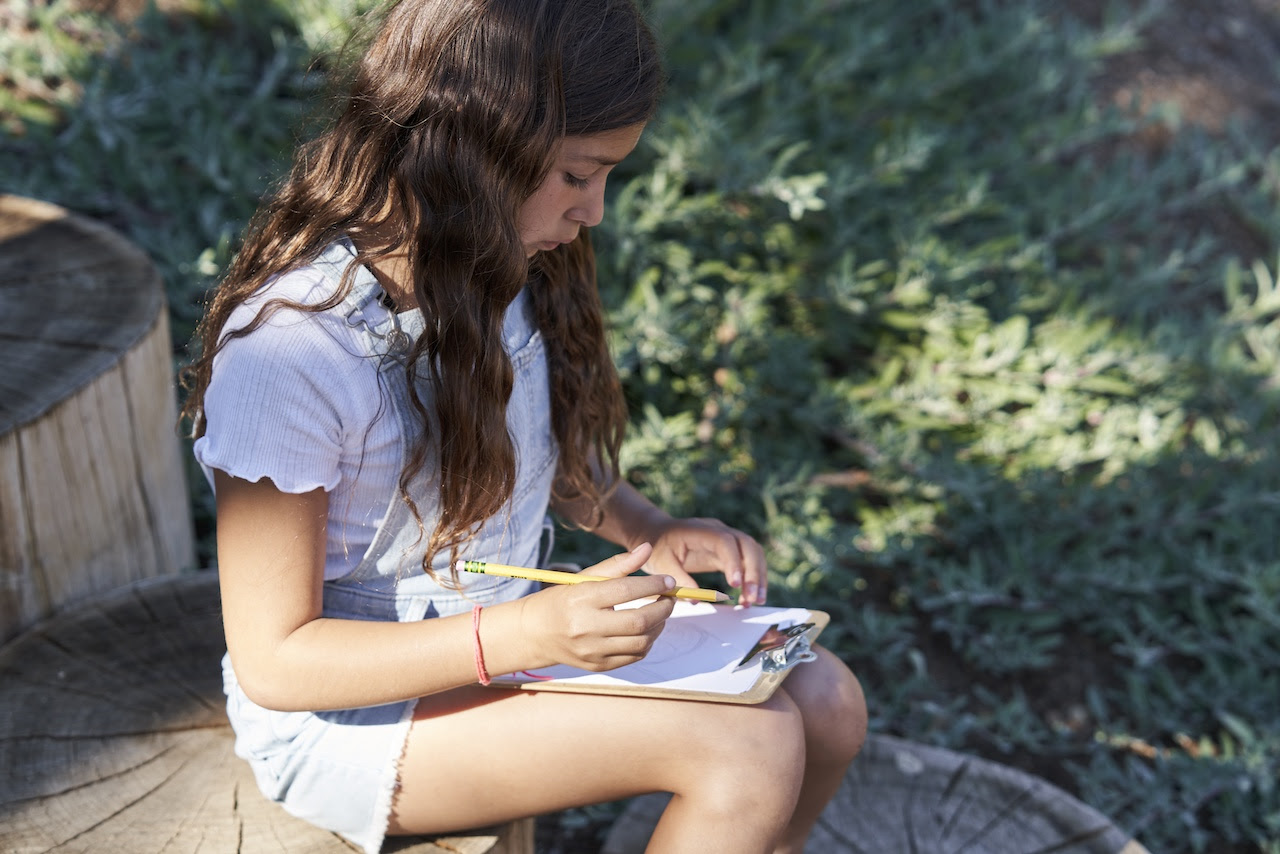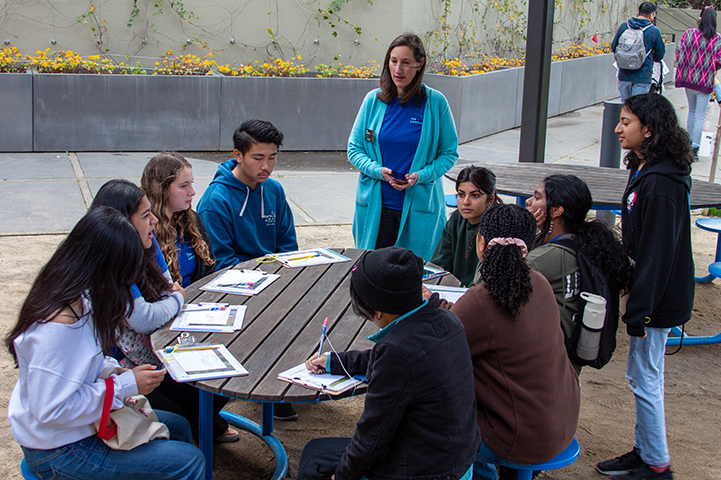California Educators Want More Environmental Learning, but Need Additional Support

Landscape study reveals 80% of California educators desire further integration of environmental literacy in classrooms and outdoor spaces
A new report published by UC Berkeley’s Lawrence Hall of Science, the California Environmental Literacy Initiative, and Ten Strands examines how much environment-based education is happening in California classrooms and outdoor spaces, and how educators and administrators feel supported in integrating environmental learning across subjects and grade levels. The report provides a baseline for the state’s educators and policy makers, who have identified environmental literacy as a key learning objective for all of California’s K-12 students.
“These educators want to teach more environmental literacy, but we need to give them high quality, developmentally appropriate, culturally responsive materials to do so.”
Senior Research Lead Melissa Collins, PhD
Broadly, the study found promising trends and improvement opportunities in implementing environmental literacy in California schools. Over 80% of surveyed teachers and administrators across the state desire more integration of environmental learning in their classrooms and districts. However, many expressed a need for additional support to follow through with their implementation.
“One of the really promising findings was that at every single grade level and within every school subject, there is a significant number of teachers who are integrating and thinking about environmental literacy in their classrooms,” said Jedda Foreman, director of the Center for Environmental Learning at The Lawrence. “This is proof of concept that environmental literacy can be successfully integrated across subject matters and grade levels.”
At its core, environmental literacy provides students with opportunities that deepen their understanding of the interdependence of natural and human social systems. The goal is to impart the knowledge, skills, and understanding of scientific and social science principles students require to analyze environmental issues and make informed decisions that lead to sustainable, prosperous, and equitable communities today and in the future. In 2018, the California legislature passed the Environmental Education: Environmental Principles and Concepts bill, in part requiring K-12 schools to weave environmental principles and concepts into their curricula. However, the bill did not create a framework for measuring progress toward this goal. This new report provides vital data for schools, districts, and decision-makers.
This research was a collaboration between The Lawrence and the California Environmental Literacy Initiative (CAELI). CAELI is a fiscally-sponsored program of Ten Strands, a California-based nonprofit that works to strengthen the partnerships and strategies that will bring climate and environmental literacy to all of California’s TK–12 students.
“Ten Strands and the California Environmental Literacy Initiative were pleased to partner once again with the Lawrence Hall of Science on an important environmental literacy project,” said Ten Strands CEO Karen Cowe. “The new California Environmental Literacy Landscape Analysis report reveals encouraging progress in promoting environmental literacy in California, but it also highlights the need for further support to ensure all students have access to environment-based experiences.”

The authors sought a sample of teachers and administrators roughly representative of California in terms of region, school type, and educator characteristics. They received survey responses from 1,080 educators across the state, including 909 teachers and 171 administrators. Overall, survey respondents teach approximately 80,000 students across all grade levels.
The overwhelming desire from teachers and administrators to further integrate environmental literacy is an encouraging sign of progress. Significant portions, especially high school educators, are teaching about climate change. Many rely on nonprofits for support in implementation and, in many cases, delivery of programs directly to students. The authors see much opportunity to invest further in community partnerships with nonprofit organizations to continue supporting educators and serving California students with high-quality environmental learning experiences.
One theme that kept coming up among surveyed educators was the necessity for additional resources. Most educators expressed the need for more and better curricular materials and professional development to provide skills and structure for more effective integration of environmental literacy across school subjects. In particular, educators asked for support in thinking about the intersections of race, culture, and the environment. The study’s authors see an opportunity to develop more learning materials emphasizing these intersections and to partner with Native communities to build capacity for teaching and sharing traditional indigenous ecological knowledge.
“Only 13% of educators thought their existing curriculum was adequate in addressing environmental literacy instruction, and having access to curricular materials and resources was one of the greatest needs educators and administrators raised,” said Melissa A. Collins, PhD, senior research lead at The Lawrence. “These educators want to teach more environmental literacy, but we need to give them high quality, developmentally appropriate, culturally responsive materials to do so.”
Moving forward, the goal is for these findings to provide a snapshot of California schools’ environmental literacy and a baseline upon which educators and policymakers can measurably improve. The study’s authors also hope their work serves as a model for other states to investigate the implementation and integration of environment-based education in their schools and outdoor spaces.
